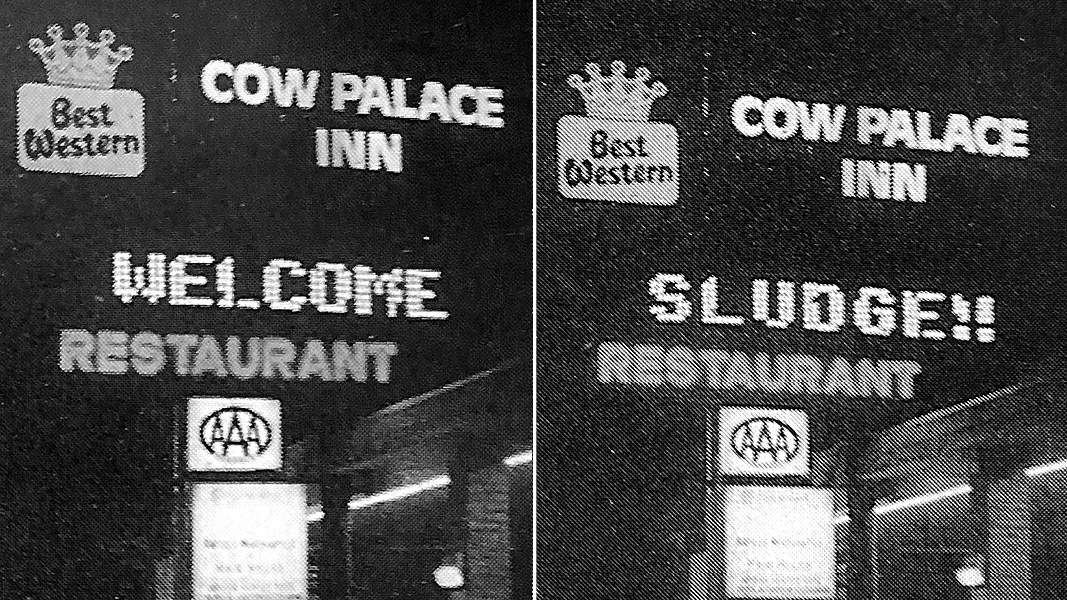Top: A “welcome sludge” sign at a local hotel created a unique show of support for land application of New York City’s biosolids in Colorado.
Last month, RadioLab, a production of WNYC Studios, aired a podcast titled “Poop Train,” a story about the journey of where human biosolids go when New York City flushes. “You may not give a second thought (or backward glance) to what the toilet whisks away after you do your business,” starts the podcast. “But we got wondering — where would we wind up if we thought of flushing as the start, and not the end, of a journey? In this short, we head out to trace the trail of sludge…from Manhattan, to wherever poop leads us.”
Until the late 1980s, New York City’s biosolids ended up in the Hudson River or the Atlantic Ocean. In 1988, the U.S. Environmental Protection Agency banned ocean dumping of biosolids, leaving New York City with the dilemma of finding a management alternative. The RadioLab podcast tells the story of how Enviro-Gro Technologies, a contractor for New York City, was seeking acreage in multiple states for land application of the City’s biosolids. The material would be hauled by train, and then off-loaded for application on farmland. Mike Scharp, at the time with Enviro-Gro, is on the podcast and lists the numerous states that wanted nothing to do with New York City’s poop. Eventually, Envro-Gro found a home in Colorado, and established a successful land application program in 1991-1992.
Kelly Sarber, who was part of the Enviro-Gro team in Colorado, wrote an article in BioCycle in April 1994 — “How To Strategize for Successful Project Development” — describing the public outreach and educational campaign that included advocacy building, media outreach, political strategies at the state and local level, and other activities necessary for public acceptance of the biosolids program. “When Governor Romer of Colorado came out to throw a shovel full of New York City biosolids on a field, it was apparent that the initial siting of the project had been successful,” wrote Sarber.
The podcast describes how the performance of the biosolids as a crop fertilizer (and as a prairie dog deterrent) helped grow and support the program in Colorado. It lasted 20 years to the day, recalls Scharp. “The first load showed up [in Lamar, Colorado] on Earth Day, 1992. And our last load showed up April 22, 2012.” New York City ended the contract primarily due to the program costs. And today? About half goes into the landfill and about half is used for mineland reclamation.













